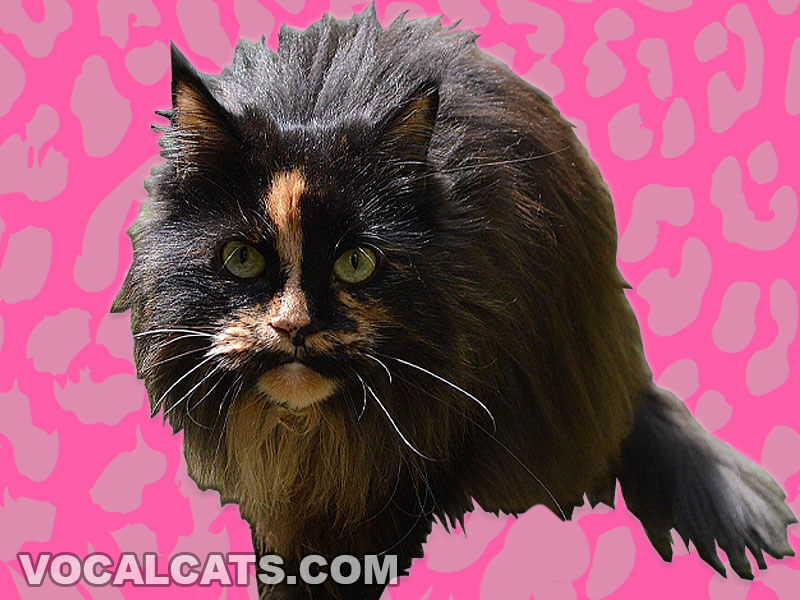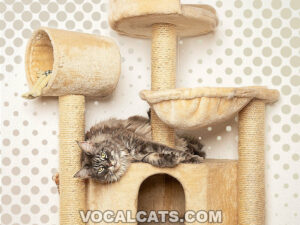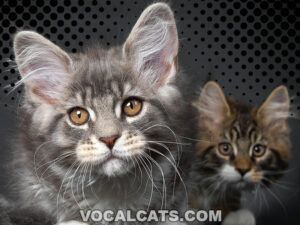Are you a cat person who is hoping to bring home an affectionate cat that is patient with young kids? You can’t go wrong with a Sepia Ragdoll cat.
If you’re planning to get a Sepia Ragdoll, you’ve landed on the right page. In our comprehensive guide, we’ll discuss everything you need to know about Sepia Ragdoll cats including how they differ from Mink Ragdoll, as well as their health issues, temperament, dietary needs, and controversy so you can decide for yourself whether to get one or not.
Welcome to the wonderful world of Sepia Ragdoll. Let’s first start with a breed overview of this gorgeous cat breed.
Contents
- Sepia Ragdoll: Breed overview
- What is a Sepia Ragdoll?
- Sepia Ragdoll parent breeds
- Sepia Ragdoll genetics
- Sepia Ragdoll controversy
- Are Sepia Ragdoll cats recognized by cat registries?
- Are Sepia Ragdolls rare?
- Are Sepia Ragdoll cats born white?
- Sepia Ragdoll physical appearance
- Sepia Ragdoll size, height, and weight
- Sepia Ragdoll coat colors and types
- Sepia Ragdoll temperament and personality
- Do Sepia Ragdoll make great family pets?
- Are Sepia Ragdoll cats good for first time cat owners?
- Are Sepia Ragdolls affectionate cats?
- Sepia Ragdoll training
- Sepia Ragdoll exercise requirement
- Sepia Ragdoll grooming and cleaning
- Is Sepia Ragdoll hypoallergenic?
- Do Sepia Ragdoll shed?
- Sepia Ragdoll food and diet
- Sepia Ragdoll common health issues
- Sepia Ragdoll lifespan
- Sepia Ragdoll breeders
- Sepia Ragdoll kittens
- Sepia Ragdoll price
- Places to find Sepia Ragdoll kittens for sale
- Finding a healthy Sepia Ragdoll for sale
- Sepia Ragdoll: Pros and Cons
- Sepia vs Mink Ragdoll
- Sepia mink Ragdoll
- Sepia vs Traditional Ragdoll
- Sepia mitted Ragdoll
- Sepia lynx Ragdoll
- Is the Sepia Ragdoll right for me?
- Related Questions
Sepia Ragdoll: Breed overview
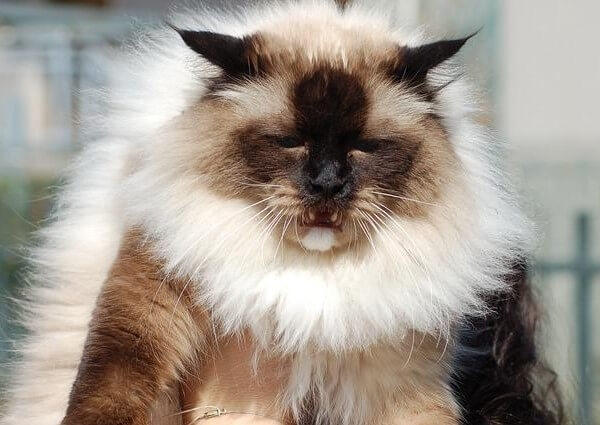
The Sepia Ragdoll is a variety of Ragdoll that has a beautiful and unique color. Enthusiasts sometimes refer to them as Cinnamon Ragdolls for their attractive reddish-brown color.
| Other names | Cinnamon Ragdoll, Sepia Cat, Cinnamon Ragdoll Cat |
| Size | Large |
| Weight | 16 – 20 pounds |
| Height | 9 – 11 inches |
| Coat Colors | Brown, Reddish-brown, Brownish-gray, Beige |
| Child Friendliness | High |
| Feline Friendliness | High |
| Training Difficulty | Moderate |
| Grooming Upkeep | Moderate – High |
| Exercise Needs | Low – Moderate |
| Health | Moderate |
| LIfespan | 15 – 20 years |
| Kitty Costs | $600 – $2,500 |
What is a Sepia Ragdoll?
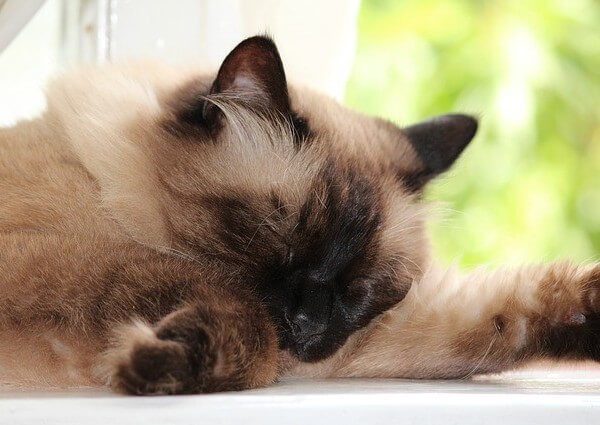
Ragdolls come in four (4) coat types: Traditional, Solid, Mink, and Sepia.
What is a Sepia Ragdoll cat and how it differ from the others?
A Sepia cat looks just like the Traditional Ragdoll with a pointed pattern except for her color which is a darker reddish-brown shade.
Sepia Ragdoll parent breeds
Sepia Ragdoll is a cross between the traditional Seal Point Ragdoll and a brown or black Burmese.
Seal Ragdolls have deep, rich brown color points on the face, ears, toes, and tail with a light brown shade on their body. They have blue eyes and their single coat is soft and long. Like all Ragdolls, they are friendly, docile, and playful.
Brown Burmese has a short, satin-like, glossy coat of differing shades of brown. It can range from a deep brown to warm beige, and to medium gray with light yellowish tan shades. They are affectionate and intelligent just like the Ragdoll breed.
Seal point Ragdoll history
The Ragdoll is a fairly new breed of cat that was bred by Ann Baker in Riverside, California starting in 1963. All Ragdolls can trace their beginnings from one non-pedigreed, white domestic and long-haired angora cat named Josephine.
Josephine was crossed with several Birman or Burmese cats that eventually produced Raggedy Ann Daddy Warbucks, Fugianna, and Buckwheat, all of whom had the qualities she was looking for.
Baker then formed her own registry in 1971 called the International Ragdoll Cat Association (IRCA) to enforce standards on the new breed.
Other Ragdoll registries were eventually created and the popularity of the Ragdoll spread to Europe and other parts of the world.
RELATED: Seal Bicolor Ragdoll (Complete Guide)
Brown Burmese history
The Brown Burmese was developed during the 1930s by Dr. Joseph Thompson of San Francisco when he brought home a walnut brown female cat, named Wong Mau, from Burma.
Wong Mau was bred with a seal point Siamese, then later with her son, to produce what we now consider as the Burmese.
Sepia Ragdoll history
As we can see, the Sepia Ragdolls came about from a cross of a Seal Point Ragdoll and a Brown Burmese. The Sepia color is a result of a recessive gene that dilutes the black pigment in the fur.
Sepia Ragdoll genetics
The color of the Sepia Ragdoll cat is caused by a recessive gene that dilutes the black pigment in the fur. They are supposed to have inherited two (2) Burmese genes that came from each parent.
Their coat is usually twice as thick as the Traditional Ragdoll and, of course, darker.
Sepia Ragdoll controversy
The main controversy regarding Sepia Ragdolls is that they are not really pedigreed Ragdolls and do not meet the standards of the breed.
A lot of Ragdoll enthusiasts are worried that the characteristics of the breed will be lost if it keeps getting crossed with other breeds to produce the desired color.
Sepia Ragdolls can have other eye colors other than blue which is regarded also as a controversy in the Ragdoll breeding community.
Blue eye color is one of the distinguishing factors of the purebred Ragdoll as set out by the International Cat Association (TICA) and Ragdolls with eye colors other than blue are considered a mixed breed.
You may like: Blue Eyed White Ragdoll (Complete Guide)
Are Sepia Ragdoll cats recognized by cat registries?
No, unfortunately, Ragdoll Sepia is not recognized by most cat registries because they are not considered pedigreed Ragdolls.
Are Sepia Ragdolls rare?
Yes, Sepia Ragdolls are rare because Ragdoll cat Sepia is not bred to the Ragdoll standard of a pointed, blue-eyed cat, so breeders seldom include it in their breeding program.
Are Sepia Ragdoll cats born white?
No, Sepia Ragdoll cats are not born white. Their fur starts out as light in color that eventually darkens as they grow older.
Sepia Ragdoll physical appearance
Sepia Ragdolls are large cats with long bodies, wide chests, and long, fluffy tails.
Their broad and medium-sized head sits on a short neck that is lush with fur making it bigger than it seems. Eye color can be blue, aqua, green, or gold.
Sepia Ragdoll size, height, and weight
Sepia Ragdolls are considered large for a house cat. They reach maturity or their full size 3 or 4 years later than other cat breeds. At 3 months of age, their growth patter is similar to other cats, but will have a growth spurt at around 5 months. Male Sepia Ragdolls are sightly larger than female Sepia Ragdolls.
| Age | Height (Males) | Height (Females) | Weight (Males) | Weight (Females) | Length (Males) | Length (Females) |
| 3 months | 3-5 inches | 3-5 inches | 3-4 pounds | 3-4 pounds | 8-10 inches | 8-10 inches |
| 6 months | 6-7 inches | 5-6 inches | 5-8 pounds | 5-8 pounds | 10-12 inches | 10-12 inches |
| 12 months | 7-9 inches | 6-7 inches | 9-15 pounds | 8-18 pounds | 13-17 inches | 13-16 inches |
| 24 months | 9-11 inches | 7-9 inches | 15-20 pounds | 18-20 pounds | 17-21 inches | 17-19 inches |
Sepia Ragdoll coat colors and types
Sepia Ragdolls have a medium-length, single coat that is thick and soft. They have dark brown color points on the face, ears, feet, and tail. The fur in their body can range in color from beige to deep mahogany.
Solid Sepia Ragdoll
Solid Sepia Ragdoll has a reddish brown color throughout her body without the colorpoints in the face, ears, tails, and paws.
Sepia chocolate Ragdoll
Sepia Chocolate Ragdolls have reddish-brown body fur with chocolate colorpoints in the extremities.
Seal Sepia Ragdoll
Ragdoll Seal Sepia has a darker coat than the Traditional and Mink Ragdolls and Ragdoll Sepia Seal also has the softest and thickest coats.
Seal Sepia Ragdoll cat has dark color points on the face, ears, legs, and tail while a reddish-brown color on the body. Seal Sepia Ragdoll kittens are born with a light brown coat that gradually darkens as they mature.
Seal point Sepia Ragdoll
Seal Sepia colorpoint Ragdoll has reddish-brown fur in their body and rich chocolate brown colorpoints in the face, nose, legs, and tail.
Seal Sepia bicolor Ragdoll
Seal Sepia bicolor Ragdoll has an inverted “V” in the mask with a reddish-brown fur covering the back. There can be white or light cream on the front and back of the legs, as well as, the underside of the chin that runs through the belly and the tail.
Blue Sepia Ragdoll
Blue Sepia Ragdoll cat has gray colorpoints in the face, ears, nose, legs, and tail. Fur color in the body of a Blue colorpoint Sepia Ragdoll ranges from beige to reddish brown. The name Blue Sepia point Ragdoll does not actually refer to the color blue, but to the grayish colorpoints in the fur.
Blue Sepia Ragdoll kitten can have a light-colored fur when he is born that will darken over time. Eye color of the Ragdoll Sepia blue can be aqua or blue. Sepia Blue Ragdoll is similar in having a placid and docile temperament to other Ragdolls.
Lilac Sepia Ragdoll
Lilac Sepia Ragdoll has a reddish brown body with warm-toned gray color points with a tinge of pink. Their paw pads and noses can have a light pink shade also.
Read next: Lilac Ragdoll (Complete Guide)
Chocolate Sepia Ragdoll
Chocolate point Sepia Ragdoll has a beige or reddish-brown fur in the body with darker chocolate colorpoints on the face, ears, nose, legs, and tail.
Sepia Chocolate Ragdoll cat can have aqua, blue, or green eyes.
Like all Mink and Sepia Ragdolls, the Chocolate Sepia Ragdoll adult has a thicker and denser fur than the Traditional Ragdoll.
Chocolate bicolor Sepia Ragdoll
Chocolate bicolor Sepia Ragdoll has reddish-brown fur in the body with chocolate points in the ears, tail, and face. There is an inverted “V” mask on the face which is chocolate in color.
Black Sepia Ragdoll
Black Sepia Ragdoll has reddish-brown fur on the body with dark-colored colorpoints.
RELATED: Black Ragdoll Cat (Complete Guide)
Brown Sepia Ragdoll
Brown Sepia Ragdoll has brown fur overall with reddish-brown colorpoints.
Cinnamon Sepia Ragdoll
This Ragdoll has a reddish-brown shade. They can have a completely solid-colored coat of cinnamon or a light cream body with a light brown colorpoint. Eye color can be aqua, blue, gold, or green.
Cream Sepia Ragdoll
Cream Sepia Ragdoll has a light-colored body fur with reddish-brown colorpoints in the extremities.
DON’T MISS: Cream Point Ragdoll (Complete Guide)
Red Sepia Ragdoll
Red Sepia Ragdoll has a light red or orange-colored body with a darker reddish-brown colorpoint.
RECOMMENDED: Red Ragdoll Cat (Complete Guide)
Flame Sepia Ragdoll
Flame Sepia Ragdoll is similar to the Red Sepia Ragdoll. The term “flame” is used by the Cat Fanciers Association (CFA) to refer to the red color.
ALSO READ: Flame Point Ragdoll (Complete Guide)
White Sepia Ragdoll
White Sepia Ragdoll has a white-colored fur with reddish-brown colorpoints.
READ NEXT: White Ragdoll Cat (Complete Guide)
Sepia Ragdoll eye color
While Traditional Ragdolls have blue eyes and Mink Ragdolls aqua-colored eyes, it is not unusual to have Sepia Ragdoll cat green eyes, blue, aqua, or gold.
Sepia Ragdoll temperament and personality
The number one thing a Ragdoll is known for is her docility and affectionate personality.
They behave more like dogs than cats and prefer being on the ground as opposed to being on the higher ground like most cats that like to survey for prey. It is for this reason that they must not be left alone outside because they are gentle and very trusting. They don’t have the same instinctive feline outdoor skills that other cats have.
Do Sepia Ragdoll make great family pets?
Yes, Sepia Ragdolls do make great family pets. Children will immediately form a bond with the Ragdoll because they are friendly and likes to play a lot. Playing fetch like a dog is not uncommon with these furry creatures.
They can also get along with most dogs and cats and show very little aggressive behavior. They are not territorial like other cat breeds and would not even engage in a fight when confronted.
Are Sepia Ragdoll cats good for first time cat owners?
Yes, Sepia Ragdoll cats are ideal for first-time cat owners because they are affectionate, docile, and require low maintenance. They don’t require much attention and would only meow when she feels hungry.
But, it should be noted that they are also prone to separation anxiety and should never be left alone for more than 24 hours.
Sepia Ragdoll cats also tends to be clingy and like to follow you around.
Signs that they are suffering from anxiety include giving you the silent treatment and hiding away from you for long periods, and a decreased in appetite.
Are Sepia Ragdolls affectionate cats?
Yes, Sepia Ragdolls are very affectionate. In fact, they are very social and have a reputation for collapsing onto your lap or arms whenever they are getting petted. This is how they got their name – they go limp and act as if they are rag dolls every time you carry them in your arms.
Sepia Ragdoll training
You can start litter box training your Sepia Ragdoll at around 3 or 4 weeks of age. Always place the litter box in one particular place to avoid confusing your kitten. It may take a few weeks and some patience on your part before your Ragdoll masters this.
READ ALSO: Cat Scratching Litter Box Excessively: 10 Reasons Why & What To Do!
When your Ragdoll reaches 6 to 8 weeks old, it is recommended that they start their obedience training for them to learn their boundaries around the house.
It’s important to keep the sessions short and use positive reinforcements when teaching them. Using a clicker is one great technique so that your feline friend can associate the sound with a particular behavior.
Sepia Ragdoll exercise requirement
Sepia Ragdolls do not need much exercise. Around 20 minutes of playtime every day is all they need. They particularly like playing with a ball or having a game of fetch with you.
Ragdolls are more of an indoor cat and only require short bursts of activity between naps.
Sepia Ragdoll grooming and cleaning
Because of their lush coat, Sepia Ragdolls need to be brushed at least twice a week with a steel brush to prevent tangling. Regular brushing would also prevent your cat from developing excessive hairballs that could irritate their digestive tract.
Is Sepia Ragdoll hypoallergenic?
Sepia Ragdolls are considered mildly hypoallergenic due to the absence of an undercoat.
But, they still shed seasonally. Allergens may stick to these loose furs which can cause allergies in humans.
If you find yourself sneezing or itching more than you’d like, consider bringing an air purifier with a HEPA filter into your home.
These filters excel at trapping tiny particles, such as pet dander, dust, and pollen, down to 0.3 microns in size.
By running a HEPA-filtered air purifier in your living space, you can significantly reduce airborne allergens, making your home more comfortable for you and your Sepia Ragdoll.
It’s a simple solution that allows you to focus on the joys of pet companionship rather than the inconvenience of allergies.
RELATED: Are Ragdoll Cats Hypoallergenic?
Do Sepia Ragdoll shed?
Yes, Sepia Ragdolls do shed, particularly during transitional seasons like spring and autumn.
While their shedding is generally moderate, the loose fur can become a magnet for allergens that may trigger sensitivities in humans.
To effectively manage this shedding, a vacuum cleaner equipped with a High-Efficiency Particulate Air (HEPA) filter is your go-to solution.
This device is proficient in trapping fine particles, such as pet dander and hair, allowing you to maintain a cleaner and healthier living environment.
With a HEPA-filtered vacuum, you can navigate the joys and responsibilities of Sepia Ragdoll ownership without compromising comfort or cleanliness.
CHECK OUT: Do Ragdoll Cats Shed? 7 Ways To Shed Less!
Sepia Ragdoll food and diet
Sepia Ragdoll diet should consist of over 50% protein, 20% fats, and 3% carbohydrates. You can mix dry and wet food with more emphasis on canned wet food. Cats need moisture in their diet to avoid constipation and other digestive issues.
You may be interested in: Can Cats Eat Flan?
Sepia Ragdoll common health issues
Before you welcome a Sepia Ragdoll into your home, it pays to know beforehand the common health issues that can plague your cat.
We all know how costly veterinary expenses are, this is why you have to be vigilant and always look for the initial symptoms of health problems.
By being aware of these symptoms, you can take your Sepia Ragdoll to the vet for early intervention and to prevent the higher cost of treatments.
Here are the three (3) common health issues among Sepia Ragdoll cats:
1. Bladder Stones
Bladder stones are formed when there is an accumulation of minerals in your cat’s urinary bladder. The problem begins when the urinary system fails to process these naturally-occurring minerals, thereby, producing crystals that later on will form into stones.
The symptoms to look for are difficulty in urinating and specks of blood in the urine.
2. Feline Infectious Peritonitis
A viral infection that can infect cats at any age, this disease is fatal in almost all cases. It is associated with feline coronavirus which comes in different kinds of strains. Feline Infectious Peritonitis or FIP can be transmitted through contact with feces. Initial signs are loss of appetite and lethargy.
3. Feline Leukemia Virus (FeLV)
A retrovirus that belongs to the subfamily of coronavirus, it is transmitted through the cat’s saliva, feces, urine, tears, and blood.
FeLV affects the cats’ immune system, making them prone to other diseases. Weight loss and jaundice are two of the common signs.
Sepia Ragdoll lifespan
Some cat breeds live longer than others. The Sepia Ragdoll is one of those breeds that have a longer life expectancy of 15 to 20 years.
Sepia Ragdoll breeders
Have you already decided to get a Sepia Ragdoll? If yes, the most important step is to look for cat breeders that are ethical, responsible, and reputable. This is the only way you can be guaranteed that you are getting the best kitten, in terms of health and temperament.
If you get your pet from a kitty mill, the chances of her having several health problems are high as compared with getting the kitten from responsible cat breeders.
Not sure what to look for? Here are some guide questions that you can ask a breeder of Sepia Ragdoll:
- Do you have health certificates of the parents? Responsible cat breeders usually have their cats tested for certain diseases by veterinarians.
- Did you know that kittens also need to be socialized with other pets and people? Introducing the kittens to other animals and new faces is best done around 6 weeks of age in order for them to be well-adjusted. With that said, feel free to ask the breeder if the kittens are properly socialized.
- Vaccinations are very important, thus, responsible breeders should voluntarily show you the health book of the kittens.
- Kittens shouldn’t be taken away from their mothers before 10 weeks of age. In fact, most responsible breeders actually prefer to keep the kittens with their mothers up until about 14 weeks of age.
Sepia Ragdoll kittens
Getting a Sepia Ragdoll kitten means that you are willing and more than ready to care for this kitten for more than a decade. Ragdoll Sepia kittens are very cute and cuddly to look at, but, this is a commitment that you should prepare for.
Some cat lovers are wonder if Sepia Ragdoll kitten cat before and after looks the same as she ages, the answer is no. Sepia Ragdolls are usually born with a light brown coat that gradually darkens as they get older.
Before bringing home your Sepia Ragdoll kitten, make sure that all kitty essentials are properly in place such as the following:
- A kitty bed that is made with soft materials where your kitty can feel safe and secure and of course, can sleep comfortably on.
- Kittens are very active little creatures, thus, they need a lot of toys such as chaser toys to stimulate their minds. Plus, these toys are important for their physical development.
- Get a litter box and litter ready for toilet training. The ideal litter for kittens is fragrance-free and clump-free to avoid accidents.
- A scratching post because scratching is a cat’s instinct. A scratching post is needed by your Sepia Ragdoll kitten for her smooth adjustment to your home and to help reduce her anxiety in a new environment.
CHECK OUT: Do Ragdoll Cats Scratch Furniture?
Sepia Ragdoll price
The price tag for a Sepia Ragdoll could be anywhere from $600 to $2,500.
Places to find Sepia Ragdoll kittens for sale
To get physically healthy and properly-socialized Seal Sepia Ragdolls, always get them from responsible breeders. We’ve listed three (3) breeders below who may have Seal Sepia Ragdoll kittens for sale. The kittens coming from these breeders have been health tested and are released to the owners at an ideal age.
Sepia Ragdoll Kitten for sale USA
Fancicat Farms (fancicatfarms.com/available-kittens) have Sepia Ragdolls that are for sale at $1,900 and up. If you prefer the kitten of your choice to be spayed or neutered, you can add $100 for the procedure.
Sepia Ragdoll Kittens for sale Australia
Blue Ridge Cattery (blueridgecatteryhome.online) has Ragdoll kittens that are sold for $1,200 Australian dollars. All the kittens are released at the age of 11 weeks.
Sepia Ragdoll Kittens for sale UK
Pearldolls Ragdolls (ragdollcat.uk.com) in the UK have Ragdolls that are registered in The International Cat Association or TICA before releasing the kittens to their new families. You can contact them and see if they have Sepia Ragdoll kittens for sale.
Finding a healthy Sepia Ragdoll for sale
The main advantage of getting an adult cat over a kitten is the reduced supervision because an adult cat is less likely to destroy some of the things in your home. In this section, we’ll introduce you to breeders who may have adult Sepia Ragdolls for sale.
Sepia Ragdolls Australia
You may find Sepia Ragdolls at Mario’s Smart Kittens (mariosmartkittens.com). You may inquire if they currently have an adult Sepia Ragdoll Australia for sale.
Sepia Ragdoll Arkansas
At Garden Treasures (ourgardentreasures.com), you may just find an adult Sepia Ragdoll for sale. It is also a good place to find Sepia Chocolate Ragdoll for sale.
Sepia Ragdoll Florida
You may try your luck at Dixie Ragdolls (dixieragdolls.com) for the available cat of your choice. A pet non-refundable deposit of $500 is required.
Sepia Ragdoll Texas
Texas Ragdoll Kittens (txragdollkitten.com) could probably have an adult Sepia Ragdoll for sale. They guarantee the good health of the cats and if a health issue is discovered upon taking home the pet, buyers can request for a replacement.
Sepia Ragdoll UK
Annanoah Ragdoll Cattery (annanoahcattery.com) is a registered cattery under Felis Britannica.
Sepia Ragdoll: Pros and Cons
Do you have what it takes to care for this cat breed? Check out the table below to help you decide if Sepia Ragdoll is the perfect feline companion for you and your family.
| Pros | Cons |
| Affectionate. | Needs regular combing. |
| Calm personality. | Sheds moderately. |
| Playful and tolerant of kids. | Needs constant human companionship. |
| Intelligent. | Expensive to buy. |
| Long lifespan. | Cannot be left alone outdoors. |
| Easy to train. | Not hypoallergenic cat breed. |
Sepia vs Mink Ragdoll
The main difference between Sepia Ragdoll and Mink Ragdoll is that Sepia Ragdoll is known for her different eye colors that may come in aqua, blue, gold, green while Mink Ragdoll eyes come only in the color aqua.
Sepia mink Ragdoll
Are you wondering if a Sepia Ragdoll can be mixed with a Mink Ragdoll to come up with a Mink Sepia Ragdoll? Well, yes, there are cat breeders who mix the two to produce Ragdoll Mink Sepia kittens.
And, if two Mink Ragdolls are bred together, the resulting kittens will be Ragdoll Sepia Mink kittens.
The litter of a Mink crossed with a Sepia Ragdoll will most likely have 25% kittens with Sepia color, 50% will be Mink, while 25% will be traditional Ragdolls due to the genetic value. However, it may be bit of a challenge to find Sepia Mink Ragdoll kittens for sale.
Sepia vs Traditional Ragdoll
The main difference between Sepia Ragdoll and Traditional Ragdoll is that Sepia Ragdoll is born with light brown color that darkens as she ages while Traditional Ragdoll is born with completely white fur and begins to acquire her color at about 4 to 14 days.
Sepia mitted Ragdoll
When you hear the word mitted in Ragdolls, it means that the kittens or the cats have white fur on their paws that pretty much looks like they are wearing mittens or boots.
In the case of a Blue Mitted Sepia Ragdoll, the kitten can be described as having blue eyes with white fur on the paws and on the chest.
A Seal Mitted Sepia Ragdoll, on the other hand, may have dark chocolate brown fur and white fur on her paws and on the chest as well. A Seal Sepia Mitted Ragdoll may possibly have a little bit of white fur on the face.
What you have to keep in mind though is that Seal Mitted Sepia Ragdoll kitten does not develop her adult color until the age of 2 years old.
RELATED: Seal Mitted Ragdoll (Complete Guide)
Sepia lynx Ragdoll
If you are dreaming of owning a cat with a beautiful color that comes with rare patterns, then you may want to choose Seal Lynx Sepia Ragdoll. The Seal Sepia Lynx Ragdoll may exhibit brown points with lighter lynx stripes of light brown.
These cats can also have a blend of lilac, blue, seal, red, cream, and white with white chocolate.
The Lynx Ragdoll is usually characterized as having an ‘M’ outline pattern on the face with stripe patterns seen on the legs. But, the most unique feature of a Lynx Ragdoll is the white line around her eyes. The agouti gene is the one responsible for this color pattern.
In the case of a Blue Lynx Sepia Ragdoll, her fur is white and can have gray to bluish markings. Her belly and chest are oftentimes white without any colors. Her paws, tails, and face may have light gray to blue patterns.
YOU DON’T WANT TO MISS: Grey Ragdoll Cat (Complete Guide)
The Chocolate Lynx Sepia Ragdoll has milk chocolate points with stripes that come in a paler shade of brown. Her body could be white or pale brown.
The Lilac Lynx Sepia Ragdoll has a white to cream-colored coat with pinkish points on the face. The color of her nose and paw pads can be lavender or pink. The Flame Lynx Sepia Ragdoll has a white to cream body with deep red bar points or orange stripes on her face. The nose and paw pads are coral pink or color flesh.
CHECK OUT: Ragdoll Tabby Mix (Complete Guide)
Is the Sepia Ragdoll right for me?
A Sepia Ragdoll is right for you if you do not suffer from allergies because this cat breed sheds a lot. If you do not mind grooming her as often as possible, then, yes, this cat breed can be your perfect companion.
We also want to stress that a Sepia Ragdoll can sometimes act like a dog, wanting to be cuddled and not left alone for long periods of time. That said, if someone is always present at home to stay with her, yes, you can go ahead and bring home a Sepia Ragdoll.
Related Questions
A Sepia Ragdoll is a type of Ragdoll that is very similar to a Traditional Ragdoll in that she has a pointed pattern except her coat is a darker reddish-brown shade.
The main difference between a Sepia Ragdoll and a Mink Ragdoll is that Sepia Ragdoll has many different eye colors including green, blue, aqua, and gold while a Mink Ragdoll only has one eye color and that is aqua.
Yes, Sepia Ragdolls do have blue eyes. In addition to having blue eyes, Sepia Ragdolls can have aqua, green, and gold colored eyes.
The Lilac Ragdoll is the rarest color which is characterized by having milky white and lavender to pinkish points.
DISCLAIMER: THIS WEBSITE DOES NOT PROVIDE MEDICAL ADVICE
The information, including but not limited to, text, graphics, images and other material contained on this website are for informational purposes only. No material on this site is intended to be a substitute for professional veterinary advice, diagnosis, or treatment. Always seek the advice of your veterinarian or other qualified health care provider with any questions you may have regarding a medical condition.
Resources:
https://en.wikipedia.org/wiki/Ragdoll
https://vgl.ucdavis.edu/test/colorpoint-restriction
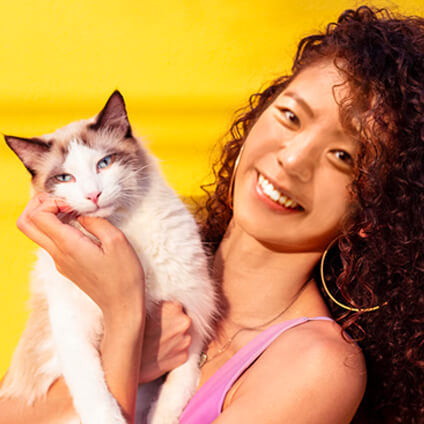
With over five years of specialized experience as an animal writer, my expertise lies in cat nutrition, health, behavior, grooming, and training. I am dedicated to delivering helpful and informative content that caters to the well-being of our feline friends. My primary goal is to empower pet owners with knowledge and ensure our feline companions thrive in health and happiness. In my free time, I love volunteering at local cat rescue centers.
